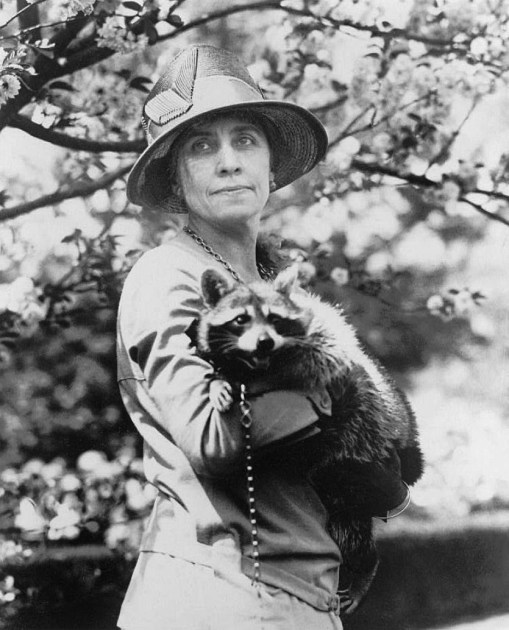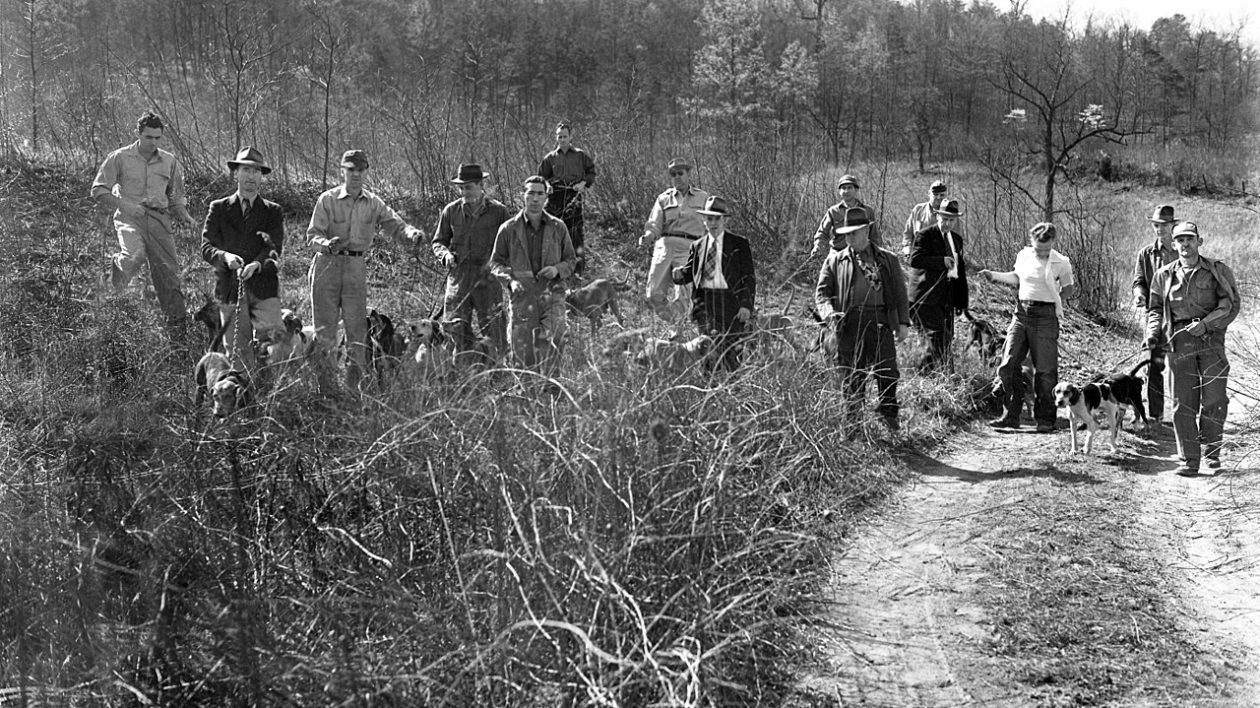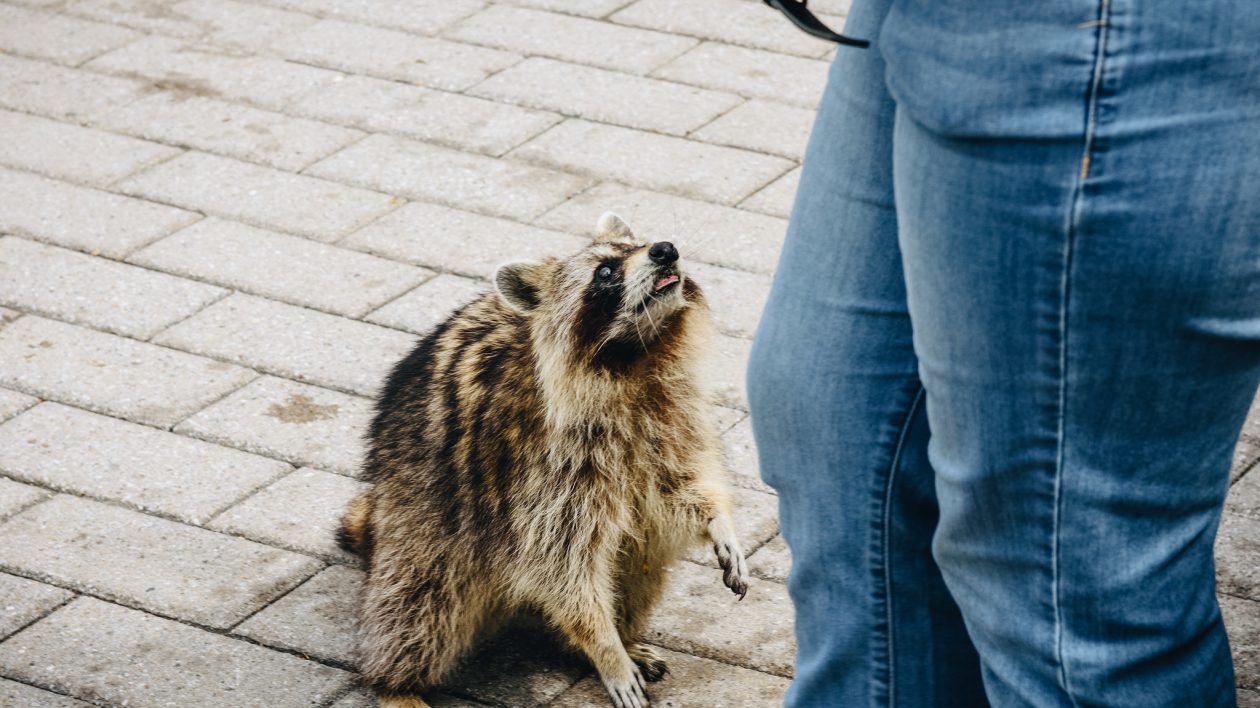It’s become an annual tradition and a staple of holiday news broadcasts: Each Thanksgiving, the U.S. president pardons a turkey. But how about a presidential pardon for a Thanksgiving raccoon?
It’s true. In 1926, President Calvin Coolidge received a raccoon as a Thanksgiving dinner gift. But Coolidge saw the friendly young creature and decided it would make a much better pet.
This decision probably didn’t surprise many people at the time, as Coolidge had quite a collection of animals at the White House, according to the Presidential Pet Museum. (Yes, this exists). Coolidge owned typical pets including dogs, cats, canaries, a donkey and a goose. But he also had a menagerie of wild critters, most of them given to him as gifts. These included a bobcat, a black bear, a wallaby, two lions and a pygmy hippo named Billy. Seriously: a pygmy hippo once lived at the White House.
Historically, people often sent gifts to the president for the holidays. A Mississippi resident sent the raccoon with a note, according to one source, that the meat had a “toothsome” flavor.

Coolidge was known as “Silent Cal” for his reluctance to speak unless he deemed it absolutely necessary. However, he apparently knew a good P.R. win when he saw one. Soon after receiving the raccoon, he introduced the animal to the press. By Christmas Eve that year, he had named the raccoon “Rebecca” and gave it free reign inside the White House.
Grace Coolidge once wrote, “She enjoyed nothing better than being placed in a bathtub with a little water in it and given a cake of soap with which to play. In this fashion she would amuse herself for an hour or more.”
According to the Presidential Pet Museum, Rebecca became “a frequent sight at White House events, including Easter egg rolls.”
Rebecca also appeared frequently in photos being held and cuddled by both the president and First Lady Grace Coolidge. Grace Coolidge even bought Rebecca her own den. Despite all the presidential affection, raccoons actually make really bad pets, so one wonders how much mayhem she caused around the White House.
At one point, the president attempted to find a suitable mate for Rebecca. The male raccoon, dubbed Reuben, didn’t like Rebecca or being cooped up in a house. It ran away.
As did Rebecca when the Calvin and Grace took her on a summer trip to the Black Hills. They decided to donate her to the local Rock Park Zoo, but she never adapted to zoo life and died there. And so ended the saga that began with one of the more unusual holiday dinner suggestions in history. Or was it?

People Eating Raccoons
If the relatives brought a live raccoon to your house for their contribution to this year’s holiday feast, I suspect you would not invite them back. Ever.
In the 1920s, though, a feast of Thanksgiving raccoon would not seem as weird as it does today. Wild foods including roast raccoon and opossum were considered regional specialties, and many wildlife species were served on the menus of the country’s finest restaurants.
Hunting remains a popular tradition in many parts of the United States, and a lot of families still eat plenty of venison and meat from other abundant game species. The renewed interest in eating local has likewise has introduced new people to eating wild game they harvested. Similarly, “bizarre” foods shows routinely showcase eating things like raccoons.
All that aside, interest in wild foods in the United States pales compared to historic consumption, when train cars were literally filled with carcasses of prairie chickens and waterfowl.
In the 1880s, when Mark Twain traveled around Europe, he grew bored of what he considered monotonous meals. He created a list of 60 foods of quintessential American foods that he missed. The list is telling, in that many of these foods are no longer on the menu. It’s also notable that many of the meats were from wild animals: terrapin, wild turkey, woodcock, prairie chicken and canvasback among them. And, yes, raccoon.
The commercial harvest of wildlife, of course, nearly doomed many species. New regulations ended the slaughter of wildlife for commercial sale, so you could no longer order canvasback at a fine New York City restaurant.
There are more raccoons roaming the continent now than when Twain wrote his list. For most of us, they are no longer dinner. But they are our neighbors.

Of Humans and Raccoons
At the time of European colonization, raccoons lived primarily in the forest. While historical records of raccoon abundance are spotty, they likely lived at fairly low densities. After all, they had to share the forest with much larger predators that competed for food – and ate them. Extensive logging of forests also destroyed their habitat.
Colonization at first posed a major threat to raccoons, as they were hunted and trapped for furs and meat. When Calvin Coolidge received Rebecca as a gift, raccoons were uncommon in most parts of the country.
But soon, much of the eastern United States began reverting to forest. And raccoons started moving into new habitats. They eat just about anything, and the new mix of farms and suburbs provided a veritable smorgasbord.
In the 1920s, they were documented as living within the city limits of Cincinnati. By the 1950s, many U.S. cities in the east had populations. Today, they thrive in both suburbs and in city limits.
Their relationship with humanity remains complicated. They continue to be hunted and trapped for fur with varying levels of intensity. Movies and television shows about Davy Crockett created a fad for coonskin caps, even though it’s questionable if the real Davy Crockett ever wore such a hat.
Raccoons have also been faddish pets. While President Coolidge found Rebecca a delightful companion, he remains a bit of an outlier. (Also, he owned a pygmy hippo). A 1963 children’s book called Rascal recounted the author’s adventures with a pet raccoon. Although Rascal was hardly a model pet, the book fueled an interest in keeping these animals.

I had a good college friend who had a pet raccoon named Rascal. Most of his stories involved his pet biting him, and he had the scars to prove it. They may be cute but they are really difficult to tame. They’re also quite strong and pack a powerful bite. However, they apparently remain a trendy pet in Europe. Unfortunately, some pet owners release their unruly animals, and raccoons are now an invasive pest in many countries.
The German city of Kassel, for instance, has a raccoon population density estimated as ranging between 130 to 390 animals per square mile.
In the United States, most people now consider raccoons to be charismatic critters – provided they stay out of sight and out of mind. As raccoon populations swell, though, they often become unwelcome neighbors. They carry rabies. They raid home gardens and backyard chicken coops.
Research has shown that raccoons live at much higher densities in urban areas. They have also become smarter and fatter than their forest counterparts. They have learned to use pet doors to access indoor food, and have learned how to best access garbage cans. Research published this year found that urban raccoons are prone to obesity and have elevated blood sugar levels.
They’re here to stay. And while you probably won’t have one for Thanksgiving this year, don’t be surprised if one stops by your garbage can for leftovers.




Are we going to see a diabetes epidemic among raccoons?